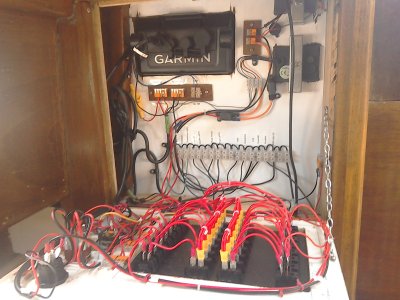C08
Well-known member
Some of my wiring is untidy/messy with a long choc block series of connections and not well labelled. I have been looking for a connector block system that I can label and perhaps with lever wire clamps rather than screws. I am struggling to find the sort of thing I want. Any pointers in the right direction please.

